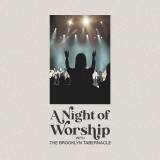Singing Soprano
If you’re singing soprano, it means that you’re a woman, and you have a high singing voice. It also means that you’re probably singing opera at some point, or at least classical music– as this is where most sopranos perform. With that in mind, here are the various steps to singing soprano:
1. Are You a Soprano: you first need to find out if you are a
soprano. For this, it is best to get a singing coach or instructor to listen to
you sing. Based on a few simple exercises, he or she will be able to tell you
if you should be singing soprano. Once you know for certain, you’re going to
want to master the range from middle C (C4) to high A (A5). If you want to sing
opera, then you’ll have to master two octaves that are above middle C.
2. Join a Choir: or a community theater, church group, music club,
and so on. This will help you in getting plenty of practice in singing soprano.
3. One Step at a Time: getting to those high notes can be tough on
the vocal cords. So, a good exercise for singing soprano is to start in your
lower register and then go up, getting up to the higher notes one step at a
time. Do this in a slow, steady pace to start with, and then as you get better
at it, you can run up and down those steps very rapidly.
4. Flexible Cords: in order to reach higher notes when singing
soprano, you have to have very flexible vocal cords. The best way to do this is
to keep them moist, yet do so by avoiding cold drinks or food; they tend to
damage your vocal cords.
5. Learn to Breathe Properly: to hit those high notes when singing
soprano, you need powerful breathing; yet, not just a blast of air – that’s
just screaming. So, you need to control your breathing. To that end, taking a
deep breath means expanding your abdomen. Then, to get that powerful breath of
air out, you push from your diaphragm. This way, you air goes across your vocal
cords at a steady pace and you can both reach those high notes and hold them as
you should for singing soprano.
6. Sing to the Backseats: this is an old theater term; it means
that you have to speak up – or sing – loud enough for the people in the back
rows to hear you. No matter how close you are to an audience, a good soprano
knows to focus on the back rows and project their voice to them. When you
imagine that your audience is far away, your voice will just naturally go up in
pitch.
7. An Emotional Level: when people get emotionally excited, the
pitch of their voice naturally goes higher. So, if you can do the same with
your singing – become very emotionally involved in your song or the part you’re
playing, your soprano voice will get stronger at singing soprano. Now, as most
sopranos sing in operas, this means singing in Italian, German and French. If
you learn those languages and can understand what it is you’re really saying in
your songs, it makes it much easier to find your passion, and instill that into
your singing.
When you are singing soprano, you first need to determine just
which kind of soprano you are, and then work to strength that voice. Only then
will you figure out what roles are available and best for you.
Singing Soprano
 Reviewed by Admin
on
6:58:00 PM
Rating:
Reviewed by Admin
on
6:58:00 PM
Rating:
 Reviewed by Admin
on
6:58:00 PM
Rating:
Reviewed by Admin
on
6:58:00 PM
Rating:

















Post a Comment